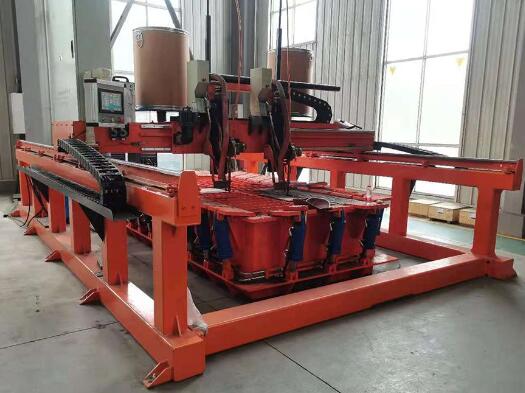Wear plate hardfacing is a welding process used to increase the wear resistance of metal components subjected to high abrasion, impact, or erosion. This technique is widely applied in industries such as mining, construction, and agriculture where equipment faces harsh conditions. Hardfacing essentially involves depositing a harder material onto the surface of the wear plate to extend its lifespan, reducing the need for frequent replacement.

A wear plate hardfacing welding machine is a specialized piece of equipment designed to automate and streamline the hardfacing process. It is used to apply hardfacing materials, typically through welding, onto the surface of wear plates. The machine ensures precision, consistency, and efficiency, making it an essential tool for industries that deal with heavy-duty machinery. The materials used for hardfacing are usually harder than the base metal, such as tungsten carbide, chromium carbide, or other hard alloys.
The operation of a wear plate hardfacing welding machine involves a series of steps, starting with surface preparation. The wear plate is thoroughly cleaned to remove any contaminants that might interfere with the welding process. Once prepared, the machine uses one of several welding techniques, such as open arc welding, submerged arc welding, or plasma transferred arc (PTA) welding, to apply the hardfacing material.
In open arc welding, the machine uses a welding wire to melt and deposit the hardfacing material onto the plate’s surface. Submerged arc welding is similar but involves a protective layer of flux to shield the process, while PTA welding uses plasma to transfer the hardfacing material, creating a stronger bond. The machine is programmed to cover the wear plate evenly, ensuring consistent thickness and optimal performance.
Hardfacing with a wear plate welding machine offers several benefits. First, it significantly extends the wear plate’s lifespan by increasing its resistance to abrasion, impact, and erosion. This translates to cost savings for businesses by reducing the frequency of part replacement and downtime due to equipment failure. Additionally, the automated nature of the welding machine ensures a high level of precision and quality, leading to consistent results across all wear plates.
Different types of materials can be used in the hardfacing process, depending on the application. Common materials include chromium carbide and tungsten carbide. Chromium carbide is known for its excellent wear resistance and is ideal for applications that involve moderate to severe abrasion. Tungsten carbide, on the other hand, offers superior hardness and is preferred in extremely abrasive conditions. The choice of material impacts the performance and durability of the wear plate, making it essential to select the right one based on the specific operational environment.
A wear plate hardfacing welding machine is a vital tool for industries looking to prolong the life of their equipment and reduce costs. By applying a layer of hardfacing material to wear plates, the machine ensures they can withstand harsh conditions, improving performance and efficiency. If you're interested in learning more about wear plate hardfacing welding machines or are looking for a reliable supplier, contact us today for expert guidance and support.
Copyright © Jinhua (Qingdao) Hardfacing Technology Co., Ltd. All Rights Reserved |
Sitemap
| Technical Support:
